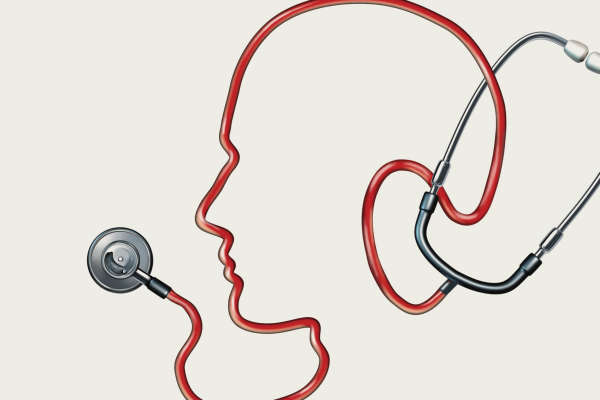I have spent a few years now working in what I currently feel free to call coach-therapy. It is a stylish, effective and efficient (ie ‘effecticient’) way to work, which evolved firstly from my diploma training and secondly from the need to make sure that the parents of younger children are on board with what is happening. This means that counselling inevitably involves an element of parent and family coaching, which in turn worms its way into the child’s sessions, where appropriate. Adolescents, too, often need to find a sympathetic coach-like person within their skilled counsellor. They hate not knowing, not having the life experience adults have, not getting things sorted faster.
Research by Mick Cooper1 suggests that providing guidance, advice or specific techniques has been helpful for young people receiving counselling. More recent research by Alex Williams2 among counsellors of young people found that the term ‘solution-focused’ was used a lot when talking about therapy with adolescents, with the explanation that adolescents work well with goals and a structured approach. This, she reported, enables them to see the potential for change instantaneously. Linked with this, the counsellors interviewed expressed a view that using evidence to persuade adolescents of their strengths, and using tangible tools in therapy, were both particularly effective.
How did I get here?
I often used to ponder the implications of the construct ‘directive<>non-directive’ when working with children and young people (CYP), but my thinking quickly loosened to accommodate the idea that it’s not ethical to withhold information that might facilitate a shorter intervention with a young person who needs to get back out there and get on with their life. I think it was Gerard Egan who said, ‘Do whatever works and is ethical’. So here I am, rarely distinguishing between coaching and counselling but gliding gently with the flow both in and between sessions with CYP and their parents in whatever way brings the results they wish for in the shortest time.
My counselling diploma training took the philosophy of Kelly’s Personal Construct Psychology (PCP) as the meta model. PCP is contentless, and we applied the thinking to CBT, humanistic and psychodynamic models and investigated how they construe the world, the person, ill health and wellbeing. In this way, our range of constructs for those things became wider and provided us with a continuum of ways of thinking with and about the client, and – importantly – the ability to see the field of wellbeing as one continuous arc. A thought vocabulary if you like, which can be stretched to encompass many theories and models.
After that, I undertook various specific trainings, including play therapy, neuro-linguistic programming (NLP), child development, eye movement desensitisation and reprocessing (EMDR), emotional freedom techniques (EFT) and youth life coaching, and thought about each within PCP terms, integrating each into my workflow as appropriate to the client.
A significant event for me was when, as editor of BACP Children & Young People journal, I commissioned Carolyn Mumby to write about her new approach to working at the boundary.3 In her article (which I cannot recommend highly enough for in-depth discussion on this topic), she explained her youth-friendly Personal Consultancy model (devised with Jinks and Popovic and based on Boniwell and Popovic’s work).4 This made sense of the continuum in a different way, and I think this is when I first realised I didn’t have to be in the closet as a therapist-coach and could come out when I felt brave enough. That year, I listed my coach training on my CPD for BACP re-accreditation, and worked on the Youth Coaching Academy’s (YCA) Coach in Every UK City project in the 2011-2012 academic year, setting up a pilot life coaching service in an academy. There, I proved to myself (again) that teenagers need someone who can work across counselling and coaching without losing sight of the main focus of their contract. This perhaps needs further explanation, since I was engaged as a coach and serious trauma would have had to be referred on in that scenario. (In my private practice, however, we work with it at the right time and in their chosen way.)
The individual pupils in the pilot were to have six life coaching sessions with me, each session dedicated to furthering their stated passionate goal in life. We elucidated this overarching goal in the first session after using the Wheel of Life to survey their life’s chief areas. This united the child’s context holistically rather than fragmenting it. But I noticed straight away that I needed to employ the full spectrum of counselling skills in order to facilitate any movement, despite their keenness. They were volunteers to coaching but with a huge amount of baggage and difficult home contexts. There was neglect, parents reappearing from prison, difficulties with favouritism within mixed families, and missing or substance-abusing dads or mums.
If a girl or boy ended up in my room in tears (clearly I was a ‘non-staff’ safe place), there was little coaching to be done until they had been heard, empathised with and allowed to recover themselves. I was comfortable with this. As a pure coach, I wonder if I would have been less at ease with the emotion and the ‘waste of valuable time’. I didn’t feel I had to push on despite the situation – more would be gained by working with the emotional episode and allowing the healing and calming effect of that to influence the coaching outcomes. Young clients love to learn how their brain works and how it can be hijacked by emotional responses.
The way I work with young people integratively therefore resonates strongly with what Frances Masters had already written in BACP Children & Young People in June 2011 while explaining her Fusion model: ‘Young people are also often very creative and imaginative and soak up new information like a sponge. Knowledge is power, which they love. The things they do not understand can frighten them, so, at Reclaim Life, we spend time explaining the neuroscience behind emotions to allow for deeper understanding and a sense of empowerment.’5
More recently, she has written: ‘Having many years of experience of working with teenagers, I know this proactive model [featured in her integrated NCFE accredited Therapeutic Coaching Diploma] really works for them and they enjoy the therapeutic coaching process, which is designed to cover a five- or six-session format.’6
I couldn’t agree more about the appropriateness of this integrated work with young clients. It solves so many of their problems about accessing help. And as for the ‘client-led’ vs ‘proactive’ aspect, I tend to ask, ‘What has been most helpful to you today?’ and their answer informs me about whether they wish to talk more, do more, plan more, think more etc. This is unique to the client and therefore client led. Once they know that I will be enabling the agenda within their preferences, they are more open to admitting their truth and working on what needs working on.
The limits of only one style
I think the current trend towards integration reflects the views of Ian Day and John Blakey, who believe that ‘one default style is limiting, whereas a repertoire of approaches is robust and effective’.7 They claim that coaching is being held back by a refusal to allow the therapeutic side to emerge: ‘We believe this therapeutic legacy is now holding coaching back from the edge and preventing coaching from becoming the transformational, global force that it has the potential to be.’7
The reverse is also true, of course: unwillingness to offer the right kind of coaching conversation can hinder a young person in therapy from getting back on track at the earliest opportunity. My opinion is, therefore, that the ‘right kind of conversation’ depends on having multiple skills from multiple sources.
The right kind of conversation
In relation to Kelly’s personal construct theory,8 I, like most of us, I imagine, listen out for my young clients’ constructs – their meaning making, their worldview – as they tell their story. The aim is to gain rapport and help them explain their current situation, themselves and their desired future. I’m also assessing the situation and the client. We discuss the meanings that come up, because constructs are based on experience and working hypotheses, mostly individualistic and value laden. Although sensible in origin, they are not necessarily useful now, or serving the young person well. Leading from this, we might also do an exercise to investigate their core values. This is important and eyeopening for them, as no one will achieve their stated goal in mental health or wider aspects of life if it is not aligned to their top values, for whatever reason. Teenagers are always fascinated to learn about their values, as it explains so much of what is happening to them at the moment they have come for help. We look together, too, at how they constrict or elaborate their constructs. This applies as much to coaching as counselling. Both counselling and coaching clients have usually fallen into the habit of making sure things turn out as they predict for various reasons, and therefore the changing or loosening of constructs, and finding more useful alternatives, underpins all my work. With younger clients many constructs are less defined and less rigidified – hence the attraction of working with this meta-view. A young person with confidence and self-esteem issues (‘I’m nothing but a failure’) will always notice their failures and ignore their strengths and resources. This makes sense – they elaborate whichever construct maintains their core sense of self. Better to be a well-bolstered ‘failure’ than a nobody. Any cognitive shift brought about in a coach-therapy session by loosening a construct and trying on a new one for size can lead to growth in healing the past or present predicament, but also to a more ready acceptance of good/appropriate choices as they engage with their life goals. Backwards and forwards exist on the same continuum.
We can probably insert other ‘languages’ for initial, rigid constructs. For instance, neuromuscular lock, rigid filters, static templates, tight construing and vicious circles of the thought-feeling-behaviour cycle talk of similar things. Cross-modal understanding of these similar concepts is key to working in an integrative way at the boundary because we are able to flexibly move moment by moment with the client, offering counselling and coaching within in a relational milieu, healing the past and helping them move on.
Important ingredients in coach-therapy
I think we all agree about the humanistic aspects of a helping intervention. Perhaps less so about the main psychodynamic ideas that are essential understanding for both counsellors and coaches. This is most meaningfully explored in Catherine Sandler’s book, Executive Coaching: a psychodynamic approach,9 in which she spends a whole chapter on these concepts. I thoroughly recommend this chapter to those who work with young people. In my room, I often think about unconscious processes, transference and countertransference, and defence mechanisms. It is far from Freudian rubbish and very much about how humans survive life. But defences are far less established in young people, so lots of movement is possible.
One of the many CBT ideas of utmost relevance to work on either side of the boundary is the Thought-Feeling-Body-Behaviour cycle. Many young people present with issues of trauma, anxiety, sexual identity or serious disaffection with life/family/school etc and most wish to be living the life they imagined they would be. For this, there needs to be an element of cognitive change and/or healing plus a move towards that desired future. In this respect, it is invidious to delineate between counselling and coaching because looking at this cycle illuminates what keeps them from healing as well as from that envisioned future. And change frequently arises as they cut into the cycle at any one point.
Take the hypothetical example of a young person who realises he is gay and is now self-harming. Among the huge amount of issues to be dealt with in session is also a cycle – which we might sketch out on paper – starting with his ‘I’m not OK’ thought >> (so) I feel unhappy >> (so) my body tenses up when I’m with people >> (so) I act awkward, conceal who I am, pretend I’m like them (which proves the thought) ‘I’m not OK’. At which of the points could change begin? An interesting discussion of possibilities ensues, about various aspects of being gay and self-harming – and a way forward to experiment emerges. Would I class this discussion as coaching or counselling if it happened? It’s impossible to decide and matters not. The work and the young person are all that count. The aim is always healing, resolution, solution and forward movement. And young people like something visual and active as well as something auditory, and like most of us, I pay attention to that kind of variety as well.
How does change look in CYP integrated work?
I find myself drawn to ‘change’ as a key factor in helping young people on their way. PCP sees human beings as scientists construing from hypotheses, always doing the best they can and always experimenting, especially in the area of meaning-making. All of us make meaning – I try to construe the client’s meaning-making, whether in counselling or coaching, because all change comes about by revising the meaning we place on things.
As I mentioned initially, I often work with the family where necessary and appropriate and where the client wishes it. According to Papp,10 the symptom is either a management issue or a behaviour issue, and change will involve the system – which in the case of a young person is often the family as well as their whole life scene. It doesn’t make sense to isolate counselling, intended to heal the past or ameliorate a current issue, away from coaching for managing self, siblings/parents and the future. Children’s work is often at least as much to do with tweaking their system or context in some way (as well as their meaning-making) as it is to do with kick-starting their own thinking and activating their resources. Otherwise, like a spider web, the system will pull back to keep the young person in line – because, on the whole, the power the young client actually has is not as strong as the status quo, and significant others unconsciously hate them to change – change requires them to reconstrue the young person. This applies even when they overtly desire the child’s behaviour to be different. So, as Papp says: ‘Each part can only be understood in the context of the whole.’ With adolescents who wish to keep their sessions private, the coaching element encompasses how they will themselves deal with the family system.
In conclusion
When we work integratively there will always be more done than we can recount. Emotions are managed, developmental trajectories are righted, trauma is healed and a passionate purpose in life is discovered and strategised. It doesn’t make much sense to me to chop into discrete bits what is effectively a whole living organism, in sync and constantly on the move. Young clients (and their parents) simply believe they have received what they came for (whatever the contract says) – but I perceive myself to have done an integrated delivery of what was needed. It’s not as easy as I’ve perhaps made it sound, as we all know with any intervention, but it is certainly ‘effecticient’.
Eleanor Patrick works with children, young people and their families in school and in private practice. This article is adapted from one that appeared in the journal of AICTP, the Association of Integrative Coach Therapist Professionals, August 2013 and appeared in the September 2015 issue of BACP Children & Young People, republished with permission.
More from Coaching Today

'The coach will see you now...': developing doctors as coaches in an acute hospital setting
Open article: Consultant physician Dr Debra King describes an initiative to implement an internal coaching strategy by training doctors in coaching skills. Coaching Today, October 2015

The stories we tell: a narrative approach to coaching
Open article: What role do myth, fable and story have in constructing our identity? Narrative coach Sue MacMillan demonstrates how we can use stories to help clients gain new insight and understanding and swap unhelpful or harmful scripts for those that offer hope, healing and possibility. Coaching Today, July 2015

Brief coaching with children and young people: a solution-focused approach
Open article: Denise Yusuf describes the brief solution-focused method of coaching and explains why it is so effective when applied to work with children and young people. Coaching Today, April 2015
References
1 Cooper M. Counselling schools project: evaluation report. Glasgow: Counselling Unit, University of Strathclyde; 2004.
2 Williams A. What’s the difference? BACP Children & Young People 2013; June: 46–48.
3 Mumby C. Working at the boundary. CCYP 2011; December: 14–19.
4 Popovic N, Boniwell I. Personal consultancy: an integrative approach to one-to-one talking practices. International Journal of Evidence Based Coaching and Mentoring 2007; Special Issue 1: 24–29.
5 Masters F. A fusion that works. CCYP 2011; June: 27–29.
6 On the AICTP LinkedIn forum. For details of her Fusion diploma, email frances.masters@btinternet.com
7 Day I, Blakey J. Finding the edge. Choice 2013; 11(1): 17–19.
8 See for instance Fransella F, Dalton P. Personal construct counselling in action. Sage; 1990.
9 Sandler C. Executive coaching: a psychodynamic approach. London: McGraw-Hill/OUP; 2011.
10 Papp P. The process of change. New York: Guilford Press; 1983.
